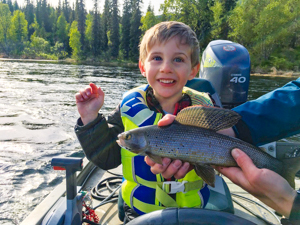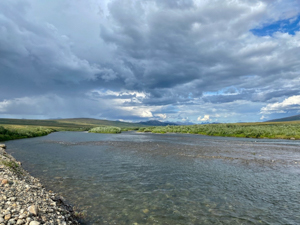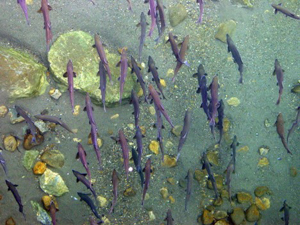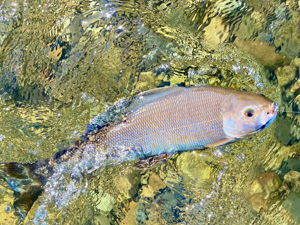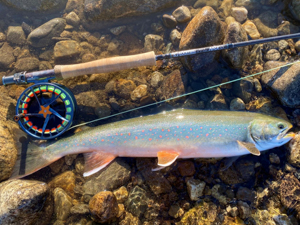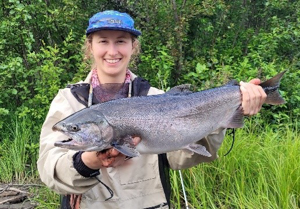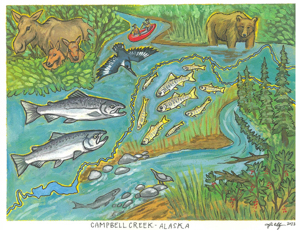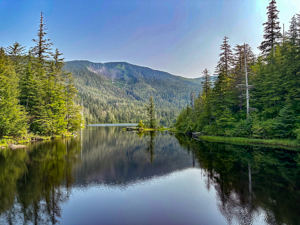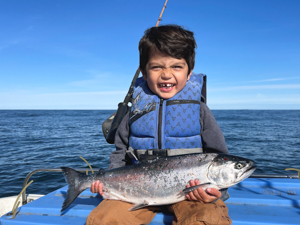
August 2023
Issue 68
Get Out and Enjoy Fall Fishing Opportunities
August is a great month to get out and enjoy some exceptional fishing opportunities. We hope you find some inspiration in this edition of Reel Times to grab your fishing gear and head out.
Have you purchased your 2023 sport fishing license yet? If not, be sure to do so before you head out on your next fishing adventure. Visit our online store to get started.
If you have a comment for Reel Times, we encourage you to reach out to us. You can send comments to ryan.ragan@alaska.gov.
We'll see you on the water
Sport fishing spotlight: The Sinuk River
By Brendan Scanlon
Nome’s road system is unique in rural Alaska and affords access to several rivers that provide excellent opportunities to catch a variety of fish species. The Nome area is known for its trophy Arctic grayling and the multitude of waters available to the roadside angler. Hikers, campers, backpackers, wildlife watchers, and birders will find many prime fishing holes along Nome’s approximately 300-mile road system.
The 73-mile Nome-Teller Road crosses the Snake, Penny, Cripple, Sinuk, Feather, Tisuk, and Bluestone Rivers that drain the south side of the Kigluaik Mountains and enter directly into the Bering Sea. The Sinuk River is the largest river along the Nome-Teller Road and is crossed by a bridge at 26.7 mile. In addition to resident Arctic grayling, the river contains spawning populations of Dolly Varden and all five species of Pacific salmon - Chinook, chum, pink, sockeye, and coho, though the numbers of Chinook are very small. The river is navigable by jet boat from the bridge downstream, and accessible by foot upstream and downstream of the bridge. The Sinuk River produces trophy-size Arctic grayling.
Fishing for Arctic grayling is good all summer, with topwater flies and smolt-imitation patterns working well in early-summer, and egg patterns working best once the thousands of pink and sockeye salmon begin spawning. Fishing can be good right at the bridge but gets better if you pull on a pair of hip waders and walk upstream.
Dolly Varden stack up in deep holes near the bridge after ice-out to gorge on pink salmon fry, but can be pretty picky and hard to catch. Try using the smallest fry imitation fly you can get to “match the hatch”, as pink salmon fry are very small. After the smolt outmigration, Dolly Varden can be caught on spoons, spinners, jigs, with egg imitation flies working best after spawning begins. Dolly Varden are very tasty and you would be remiss not to fry one up for a shore lunch.
Check out ADF&G’s Nome Roadside Fishing Guide for more details and tips for fishing along Nome’s road system.
When in Nome, you may wish to pursue other outdoor recreational activities in the area. Opportunities to view spawning salmon and other wildlife such as muskox, reindeer, moose, bear, and a great diversity of birds may be found along Nome area roadways. Check with the Alaska Department of Fish and Game, the Bureau of Land Management, and the Nome Visitor’s Bureau about areas of interest and information on recent wildlife sightings.
In Search of Silvers in Campbell Creek
By Taylor Cubbage, Fisheries Biologist I, Sportfish Division; Anchorage, North Gulf Coast, and Prince William Sound | taylor.cubbage@alaska.gov
“That was a school of coho salmon!”, I shouted as we rounded a deep, silty pool in our inflatable red canoe. It was the morning of July 26th and we had just begun a survey of Campbell Creek to count ruby-red king and sockeye salmon in the heart of Anchorage. While these species are pairing up to spawn in the riffles of Campbell Creek in late July, the coho salmon are just arriving; still silvery, occasionally dotted with sea lice, and hungry for spinners or eggs under slip bobbers.
Campbell Creek has been home to coho salmon for generations, but the inevitable urbanization of Anchorage led to difficulties for these fish. For example, young coho salmon need extensive boggy wetlands where they can feed on insects and grow quickly in the warm summer months. Coho also require high water quality, with low pollutant levels and limited erosion so their eggs do not get buried under a blanket of sediment. As Anchorage grew, wetlands were exchanged for creek-side subdivisions and runoff from highways reduced water quality, limiting the natural run of coho salmon to only about 150 individuals in the late 1980s. While Campbell could not support the entire life cycle of coho salmon, anglers and fisheries managers alike wanted to create a unique urban fishery in the middle of town, so the Elmendorf Fish Hatchery was enlisted to help in 1992. Now the William Jack Hernandez Sportfish Hatchery raises and releases 50,000 5-inch coho salmon smolt into Campbell Creek to return as large silvery adults ready to be caught for fun and food.
As a new sportfish biologist in Anchorage from Fairbanks, salmon fishing is still new to me. After spotting numerous coho salmon on our survey of Campbell Creek, I had to give this urban fishery a try. Floating Campbell Creek from Piper Street down to Dimond Boulevard provided an incredibly fishy perspective that you can’t quite get from Google maps (though I would caution even experienced boaters from floating this winding and splashy creek). It might appear tame from above, but several abandoned kayaks and torn pool floaties along our float suggested otherwise. As we ping-ponged into alder-laden banks, waved hello to tourists on the trail, and anxiously drifted by an angry mother moose, I saw many bright flashes of coho salmon in deep pools among downed spruce trees, likely resting after they journeyed up the creek overnight.
The next morning before work, I visited some of the bigger creek bends with my baitcaster and brightly colored vibrax spinners. I began fishing near the Arctic Boulevard boardwalk but had no bites after several casts, so I followed the Campbell Creek Trail to the next bend. My Xtratufs squelching in the mud, I stepped off the main trail and ducked through a network of alders before finding a swirling pool full of downed spruce trees. I cast and reeled through an eddy, keeping my shimmering spinner high in the water to avoid hidden branches. Immediately a coho salmon snuck out from the bank and grabbed the lure, fighting briefly before it became unhooked. I tied on a smaller spinner and waited to let the fish reset in the pool before casting again. Skirting the bank, I noticed the red currants were beginning to ripen and I popped a few of the sour, translucent gems in my mouth. Then a kingfisher took off from a nearby branch and swerved into the curve of the creek over my head. It must have been a sign the coho were ready for another chance as I stood listening to the faint whir of traffic, tucked into the surprising wilderness of Campbell Creek.
Check out our Southcentral Alaska sport fish regulation bookletfor where and when to fish Campbell Creek for coho salmon. Learn how to how to fish this system bywatching this video on our YouTube Channel.
Ketchikan Rainbow Trout Stocked Lakes
By Kelly Reppert, Sport Fish Area Management Biologist in Ketchikan
New freshwater fishing opportunities for stocked rainbow trout are available in two Ketchikan area lakes, Carlanna Lake and Harriet Hunt Lake. Both lakes are conveniently located along the road system, have open public access, and with liberal fishing regulations, these stocked lakes provide the ideal opportunity for anglers looking for a fun fishing adventure and trout for the pan.
Carlanna Lake and Harriet Hunt Lake were historically stocked with rainbows (1994 – 2004) and beginning in 2020, annual releases of rainbow trout resumed. Funded by ADF&G, the rainbow trout stocking program is a cooperative effort between ADF&G Division of Sport Fish and Deer Mountain Hatchery operated by the Southern Southeast Aquaculture Association.
Rainbow trout eggs make the long journey from Anchorage to Ketchikan from the William Jack Hernandez Sport Fish Hatchery to Deer Mountain Hatchery where they are incubated and reared to various sizes (2 – 5 inches) prior to stocking. Some fish are retained at the hatchery for sixteen months to be stocked as catchables (6 – 8 inches) in City Park Ponds for harvest during “Kid’s Fishing Day” in June. Releases occur annually during the spring and summer months. Carlanna Lake is stocked with 12,000 rainbow trout and up to 40,000 rainbow trout are released into Harriet Hunt Lake each year.
Rainbow trout can be caught year-round, but fishing is best in spring and early summer and again in late fall. Rainbows feed voraciously on aquatic insects and their larvae, small fish, and crustaceans. Whether you are fly fishing or using spinning gear, rainbows will strike a variety of offerings including flies, spinners, spoons, and other artificial lures which imitate their preferred foods. Carlanna Lake and Harriet Hunt Lake are among the few locations where bait is allowed. The daily bag and possession limit is 5 per day with no size limit.
Whether you are looking to try a new fishing spot or a place to take the kids fishing, Carlanna Lake and Harriet Hunt Lake are both beautiful destinations and perfect for a day trip. With close proximity to the city, Carlanna Lake is centrally located on the west end of Ketchikan. Parking is located at the end of Canyon Road. Anglers can access the lake by following the utility road up to the Carlanna Lake Dam. The trail begins from the dam and follows the southern edge of the lake for 1 mile and connects with the Minerva Mountain Trail.
Take a hike and fish for rainbow trout from one of the fishing platforms along the trail. Surrounded by the Tongass National Forest, Harriet Hunt Lake is located 18 miles north of Ketchikan. Road access to this system is from mile 8 of the North Tongass Highway continuing 10 miles along the Ward Lake Road to the Harriet Hunt Lake turn off. Harriet Hunt lake has a small gravel boat launch. You will want a small raft, canoe, or kayak to fish the lake.
For more information about fishing opportunities near you, stop by your local Alaska Department of Fish and Game Division of Sport Fish office or visit the gofishak interactive map which provides information on popular fishing locations, species run timing, fishing gear selections and boat and angler access.
Send us your best shot!
Did you take any good pictures this year of fishing with friends or family? If so, consider submitting a few shots to the 2024 sport fishing regulation summary cover photo contest.
Every year the Alaska Department of Fish and Game (ADF&G), Division of Sport Fish, publishes four regional Sport Fishing Regulation Summary booklets - Northern, Southcentral, Southeast, and Southwest.
ADF&G is now accepting photo entries of youth anglers and families or friends fishing together for the cover photo contest. We also encourage anglers to submit images showing the diversity among those who fish in Alaska. The submission deadline for photo entries with a completed and signed Media Consent Release Form is 5:00 p.m. Saturday, October 31, 2023.
A maximum of three photos may be entered. For photo submissions to be considered, all photos must be accompanied by a completed Media Consent Release Form. Please include the name of the body of water or drainage in which the photo was taken and information about the angler(s) in the photo. Photos that show evidence of fish and game violations, unethical, or unsafe actions or advertisement will not be considered – this includes youths in a boat without a life vest.
Please email all photos and a completed and signed Media Consent Release Form to the appropriate region where the fish was caught to the following individuals:
- Northern Alaska | Tim Mowry in Fairbanks, tim.mowry@alaska.gov
- Southcentral and Southwest Alaska | Katelyn Zonneville in Anchorage, katelyn.zonneville@alaska.gov
- Southeast Alaska | John Driscoll in Juneau/Douglas, john.driscoll_iii@alaska.gov
For more information on the contest, please visit this webpage.
Follow Us on Instagram
NEW! Southcentral Alaska
Field to Plate - Recipe of the Month
Sweet Potato and Zucchini Pancakes with Wild Alaska Smoked Salmon
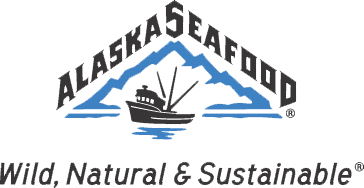 Here’s a delicious recipe for Sweet Potato and Zucchini Pancakes with Wild Alaska Smoked Salmon from the Alaska Seafood Marketing Institute.
Here’s a delicious recipe for Sweet Potato and Zucchini Pancakes with Wild Alaska Smoked Salmon from the Alaska Seafood Marketing Institute.
Enjoy!
If you have any questions about the Reel Times newsletter, please contact Ryan Ragan at ryan.ragan@alaska.gov

